How Kenny G Still Sells Records
Soundscan Surprises, Week Ending 10/27
Back-catalog sales numbers of note from Nielsen SoundScan.
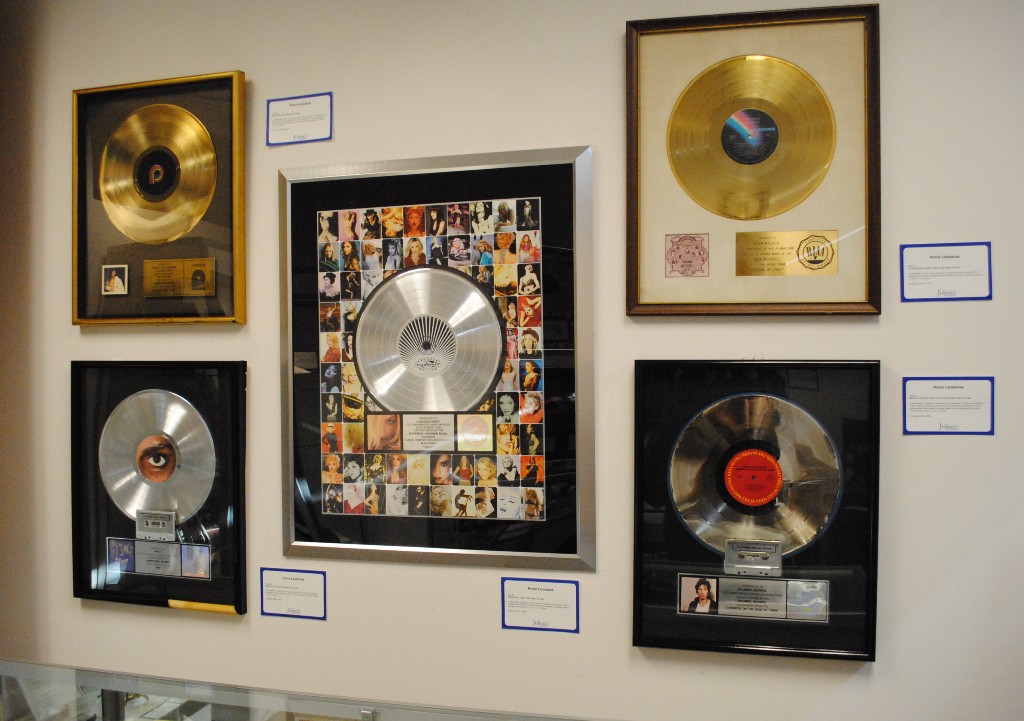
The definition of “back catalog” is: “at least 18 months old, have fallen below №100 on the Billboard 200 and do not have an active single on our radio.”
Garth Brooks creeped up to #1. Pentatonix’s Christmas Albums, plural, are here and I would love to read a defense of either or both. The Rocky Horror Picture Show soundtrack got a nice Halloween/shitty TV remake sales boost. Bette Midler has reported for duty on the charts. Lady Gaga’s only good record to date is on the back catalog because of her recent release, Joanne. Burl Ives, Bing Crosby, and Kenny G all get a little baby boost in sales for the holiday season. Very smart move, music industry executives! Whoever came up with the idea of a holiday album: Big shout to you. I finally understand.
1. BROOKS*GARTH ULTIMATE HITS 7,553 copies
5. PENTATONIX THAT’S CHRISTMAS TO ME 3,921 copies
11. VARIOUS ARTISTS ROCKY HORROR PICTURE SHOW 2,515 copies
26. BETTE MIDLER DIVINE MISS M DELUXE 2,026 copies
46. PENTATONIX PTXMAS 1,567 copies
87. LADY GAGA FAME 1,252 copies
134. IVES*BURL RUDOLPH THE RED NOSED REINDEER 1,076 copies
197. CROSBY*BING CHRISTMAS COLLECTION 918 copies
200. KENNY G MIRACLES HOLIDAY ALBUM 916 copies
(Previously.)
Death, Sex, and Dinner Parties
Salvador Dalí’s Surrealist Cookbook
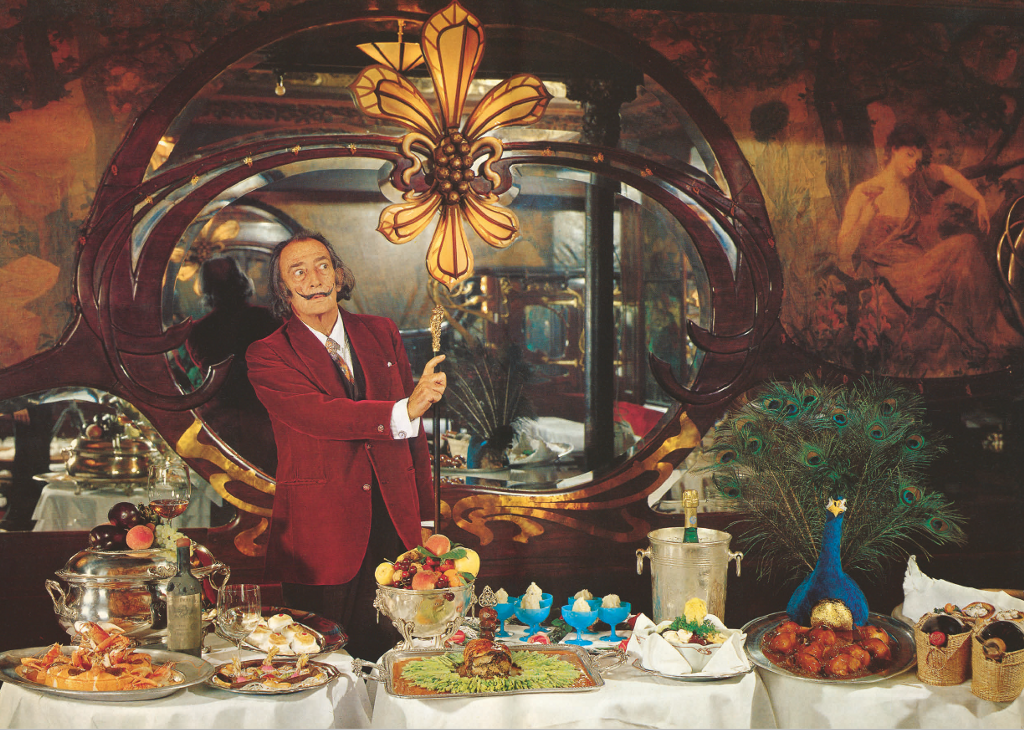
A six-year-old Salvador Dalí dreamed of being a cook. We are told this in the introduction to his cookbook, Les Diners de Gala, a collection of recipes unlike any other. His love of food continued throughout his life, and he liked to throw extravagant dinners, where the weirdness of the food matched the crazy, beautiful, messed-up paintings the artist created. I was only able find a record of one of these meals: In 1941, Dalí threw a dinner party in the Hotel del Monte, California, to raise money for European artists fleeing the Nazis. He served live frogs to Bob Hope, and gave him fish in a stiletto heel, while his wife Gala fed Babou, his Ocelot, something resembling vodka. While there are no live frogs in Les Diners de Gala (there is a very dead frog on the front cover and frog pasties later in the text) the book throbs with deliberate oddity.
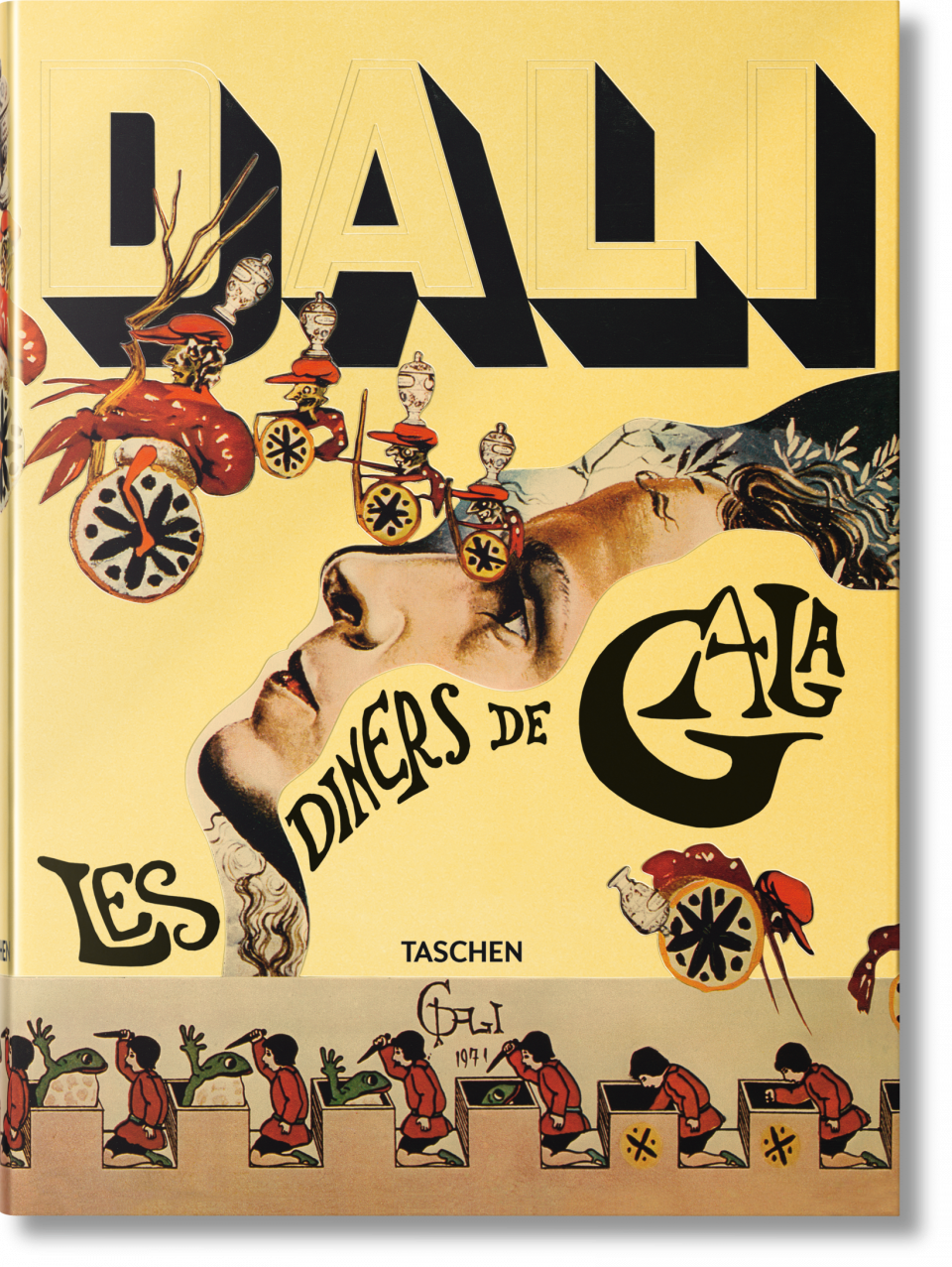
When I was a young child I wet myself on one of Salvador Dalí’s iconic lip sofas in the Espace Dalí, Montmartre. How I was able to get onto the sofa, I don’t know. Last weekend, Dalí had his revenge. I attempted a dinner party following some of the recipes in Les Diners de Gala, recently reissued by Taschen. Published in the 1970s the elaborately illustrated book shows Dalí in full showman mode, as he serves fearful but polite guests elaborate feasts from his home in Cadaqués in northern Spain. These could have been created for a photoshoot, but the food looks real enough, as do the guest’s expressions of meek panic.
While the book does not tell us the stories of Dalí’s own dinners (the images are left to speak for themselves) we learn much about his attitudes toward food (odd and very tied up with sex, unsurprisingly) and the restaurants he admired. He was a huge fan of Parisienne restaurant Maxim’s, whose menu he faithfully recreated with Salade Alexandre Dumas — containing, according to Dumas ‘great imagination, composite order, slices of beet, half moons of celery, minced truffles, rampion with its leaves and boiled potatoes’ as one of the courses, a meta nod to a French author of The Count of Monte Cristo and The Three Musketeers, who like Dalí, wrote a cookbook. I wondered if Dalí envisioned his own creations one day appearing on some menu — Mexican Baby Turkeys a la Dalí, or Aphrodite’s Puree. There was something weird and wonderful about such a book, so I requested a review copy and set a date for a dinner party.

Dalí’s brand of surrealism about fun, but there was also something darker at play. As a child, he pushed a friend off a bridge with a five-meter drop, then sat calmly eating cherries. As an adult he spoke about this, alongside his obsession with throwing himself downstairs. He was first attracted to Gala whose full name was Helena Deluvina Diakonoff, who was married at the time to his friend author Paul Eluard, when she said ‘I want you to kill me,’ He would go on to marry her. He once asked the art critic Brian Sewell to masturbate in fetal position in front of a statue of Christ.
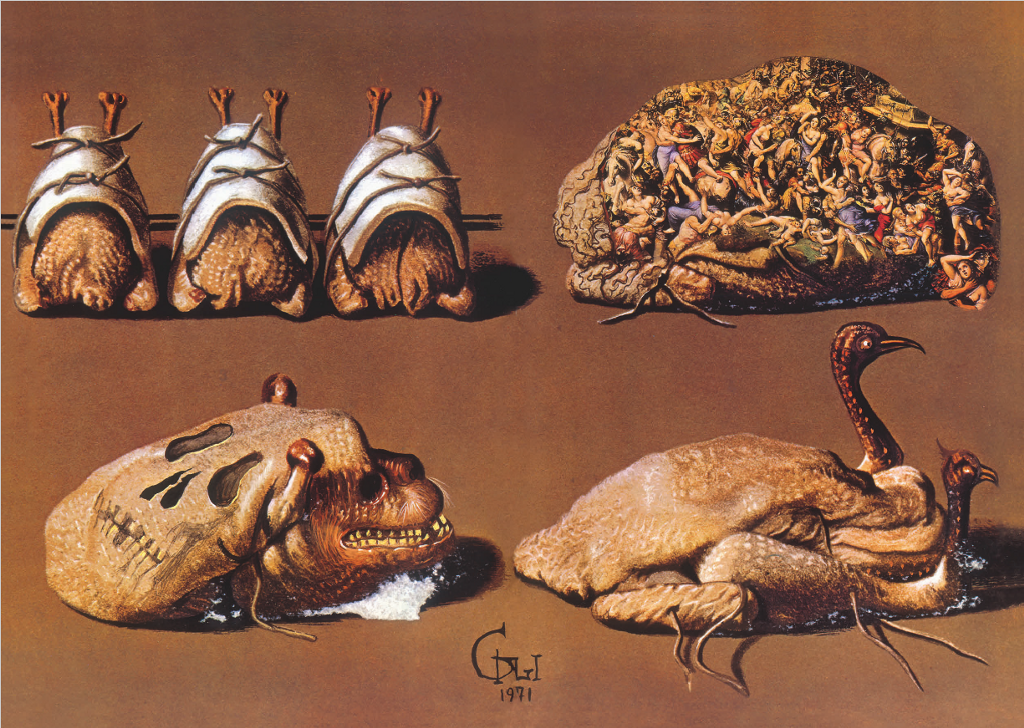
“He liked to cretinise people,” surrealist painter Genia Chef told me in a phone interview, ‘if you approach [Les diners de Gala] too seriously, you become the victim of a bad joke. It is like his paintings, a sort of art performance. It is truth, but it is a special surrealist truth. It was a joke, but not a joke, you know? Like with his painting, Dalí never made fakes.’
I thought Dalí’s book would be the perfect antidote to the glut of aspirational cookbooks churned out in the last decade — their authors were beautiful and the food sumptuous, but there are only so many ways a model can cook quinoa. There’s just something so affected about the whole thing. Dalí, of course, was the personification of affectedness, but in a different way. I’m reminded of Joe Bell’s assessment of Holly Golightly in Breakfast at Tiffany’s. “You’re wrong. She is a phony. But on the other hand you’re right. She isn’t a phony because she’s a real phony. She believes all this crap she believes. You can’t talk her out of it.”

The cover of Les Diners de Gala is a triumph of gothic bling, adorned in the gold I associate with pharaohs’ tombs, and illustrated with half a face that has gremlin unicyclists riding from the eye sockets toward a grumpy-looking prawn. A comic strip around the bottom shows a child stabbing a frog as it emerges from a box, only for it to pop up, unmaimed and affable a moment later.
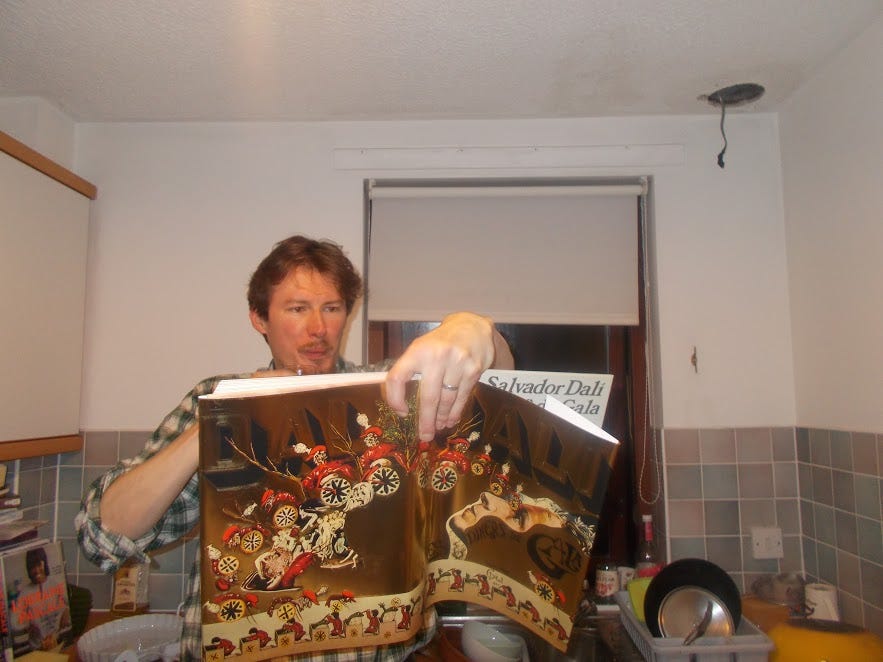
Besides food, Dalí was obsessed with, death, sex, and Catholicism. When introducing the meatiest section of the book, Dalí wrote, “The specter of death creates supreme delights, salivary expectations, and this is why the greatest of gastronomical refinements consists in eating ‘cooked and living beings.’” For Dalí, the connection between food and death was a beautiful thing; he saw the deaths of the animals he ate as a stage in the journey to his own. He cites a sixteenth-century apothecary — Theofastus Bombastus Paraclus, who was reportedly the inspiration for Faust — who said that “digestion was a combustion leading to death.”
But did Dalí really believe this? On a visit to Britain he visited a diving shop to be fitted for a suit, and when asked by the shopkeeper where he intended to dive, he told the man he wished for a suit to allow him to delve into the depths of the human subconscious, bringing a troll-like literalness to the theories of Freud and Jung. So was he a charlatan, a mad man, or in the words of Joe Bell, a real phony? In explaining the presentation of one dish he makes a passing aesthetic reference to a fifteenth-century child-murderer:
The Crayfish of Paracelsus has to be served along with the heads, or torsos, of small hot-bloodied martyrs as a homage to Gilles de Rais whose most delightful ejaculations were brought about by gazing at the dying faces of his smooth-cheeked and innocent beheaded little ones, the virginal purity of whom could only have been compared to that of his former comrade at arms, The Maid of Orleans [Joan of Arc]
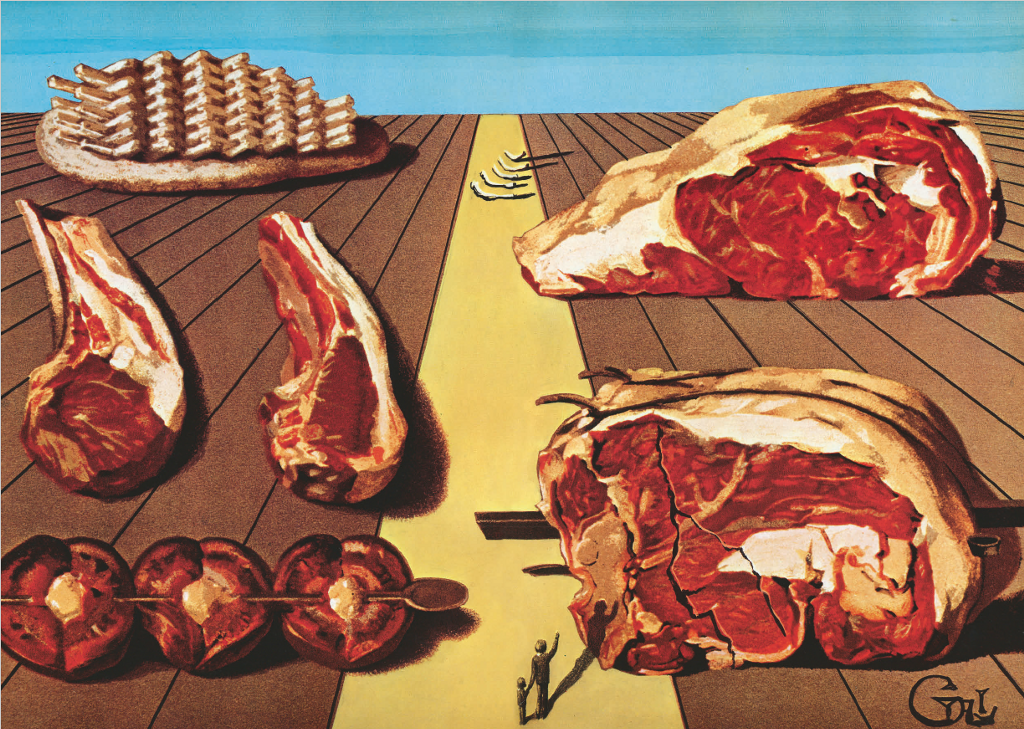
Even as a joke, or deliberate provocation, there is something frightening about this casual reference to infanticide. Had it been presented with more fanfare, as opposed to as a throwaway aside, it might have been less weird. But stumbling across it in the introduction to a chapter felt like tripping over a fake but lifelike corpse at a party — not really funny, and sick enough to make you regard your host with caution.

Les diners de Gala is maddening — at one point I felt overwhelmed by the task of feeding my friends from it, as though I was being trolled by a madman who likes to make food difficult to eat (and even more difficult to prepare) for the fun of knowing that someplace, one day someone will try these recipes and freak out. But there is a grim genius to it, complemented by Dalí’s weird illustrations: a chicken with teeth at the front and a ghoulish face in its skin, a pelican-like bird served to be eaten with the mouth and teeth of a gorgeous starlet, a melting clock reimagined as a chopping board.
The book is filled with recipes that call for offal — lungs, heads, brains and tongue of various beasts make an appearance. As a few grim diseases put an end to a consumption of brains, I decided not to hazard these — though a friend suggested I bribe a local butcher. One recipe in the index reminded me of the aspirational cookbooks I came to regret shunning Avocado Toast. The familiarity of it filled me with relief. Then I discovered it called one raw lamb’s brain.
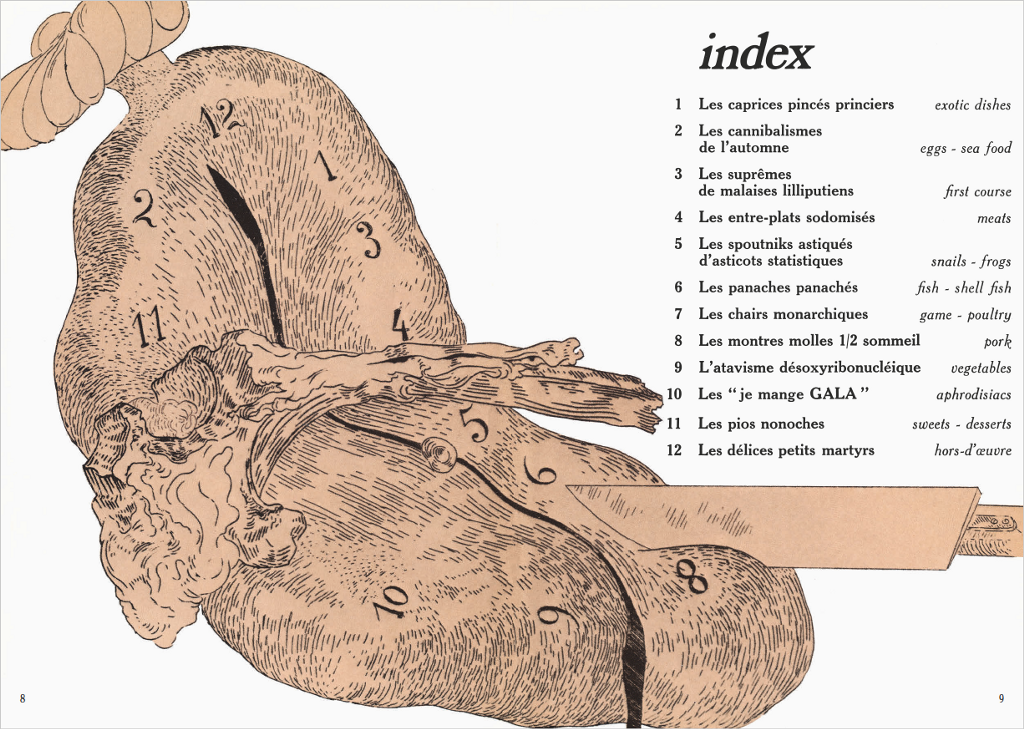
Another recipe, Leg of lamb shot with Madeira sounded okay. “Shot with” often means “with a shot of”; however, this recipe literally asks you to inject the leg of lamb with a veterinarian-gauge syringe. I only received a hard copy of the book on the same day I was to cook, so a syringe was not easily obtainable despite my being in Edinburgh, the city featured in Trainspotting. I felt it was unlikely that any of the shops would sell me one without deep questioning. I chose instead to cook Oasis Leek Pie, Tropical Chicken and Exploding Mussels.
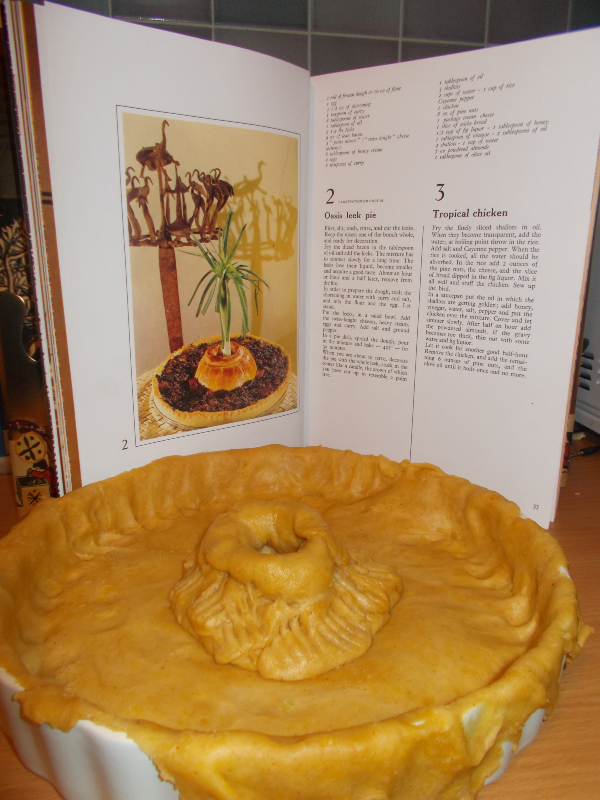
The Oasis Leek Pie looked easy enough: a quiche with a leek exploding like a firework from its center. The leek, cream and bacon filling would have probably been nice, had it not included curry powder, which tastes really odd when mixed with bacon. The amount of cream (6 tablespoons) and cheese (three petite knight cheeses) and was mildly terrifying. Dalí does warn the reader, “Les Diners de Gala is uniquely devoted to the pleasures of taste — if you are one of those calories counters who turns the joy of eating into a form of punishment, close this book at once.” He also rails against spinach: “If I hate that detestable, degrading vegetable spinach, it is only because it is shapeless like liberty. I attribute capital esthetic and moral values to food in general, and to spinach in particular.” (Here I feel confident that he is being genuine. Dalí did not seem like a man who would have believed in low-calorie diets. Similarly, it is likely that he did attribute moral values to food in the same way that modern food-writers talk about free-range, paleo or vegan diets.)
The relatively sane Oasis Leek Pie turned out to be difficult. The pastry bit in the middle designed to hold the leek looked really weird kind of like the crater of a volcano you’d make from plasticine in primary school, however and I wasn’t sure how to make it. My flatmate Vicky, who is more dexterous than I, ended up taking over the crafting of the ‘leek holder.’
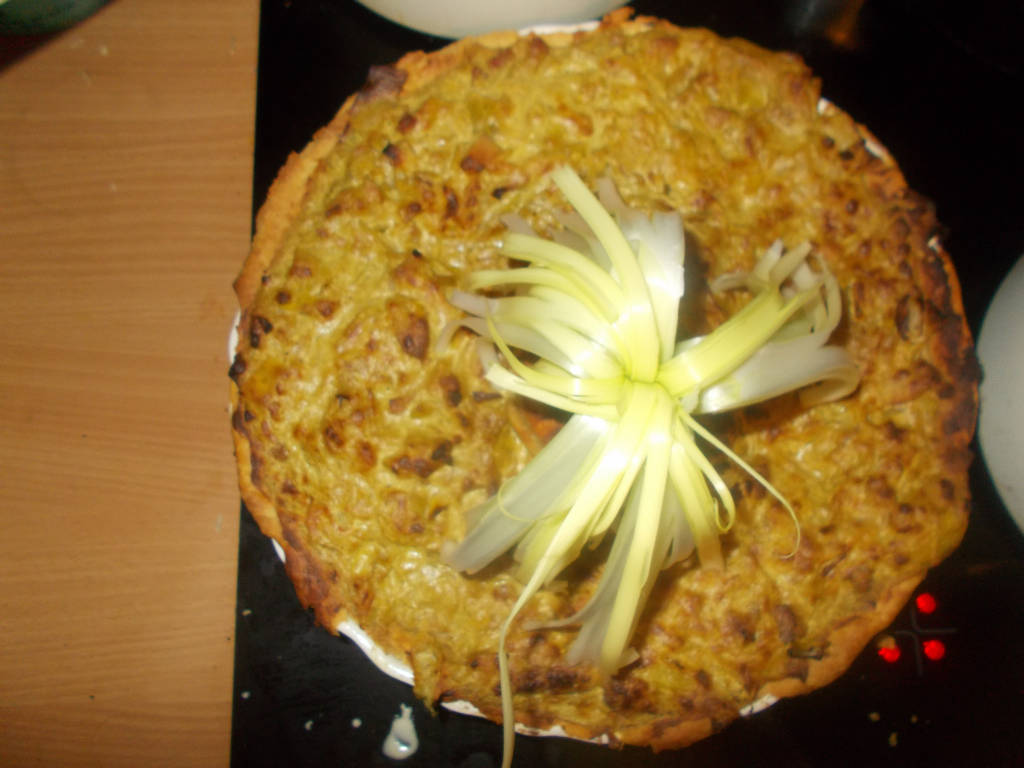
“Do you think it’s meant to look like a vagina or?” she asked. I thought it looked more like a rectum. I opened the discussion up to our guests, who on balance, thought it had something vulvate about it. I was pleased that this was the first time I had made successful pastry dough — Dalí’s recipe, with shortening rather than butter, works excellently — but annoyed that I had to fill it with the curried leeks, cream and bacon. As far as how the pie tasted, one friend went as far as saying it was “actually almost nice,” while another compared it to, “coronation chicken, but with bacon instead.”
The tropical chicken filled with rice, shallots, pine nuts and cayenne pepper was also okay, though I used figs as opposed to fig liquor as I was unable to source it. It would have probably been nicer with this addition, but the chicken was extremely edible, and nothing like the ghoulish chickens featured in the book. This was real food, with nothing surreal about it; if anything my guests were disappointed that it wasn’t any weirder.

Dalí’s paintings hold extreme beauty, even if no one can figure out what they actually mean — he rejected hifalutin analysis when asked whether his melting clocks were a response to Einstein’s theory of relativity, replying no, they were melting Camembert cheeses. Some of the recipes in Les diners de Gala are sumptuous and beautiful, designed to give pleasure to the senses, as opposed to just confusing the hell out of you. The Mussels Surprise is designed to astonish, rather than horrify. “Your guests will be flabbergasted to see the mussels opening up spontaneously,” wrote Dalí.
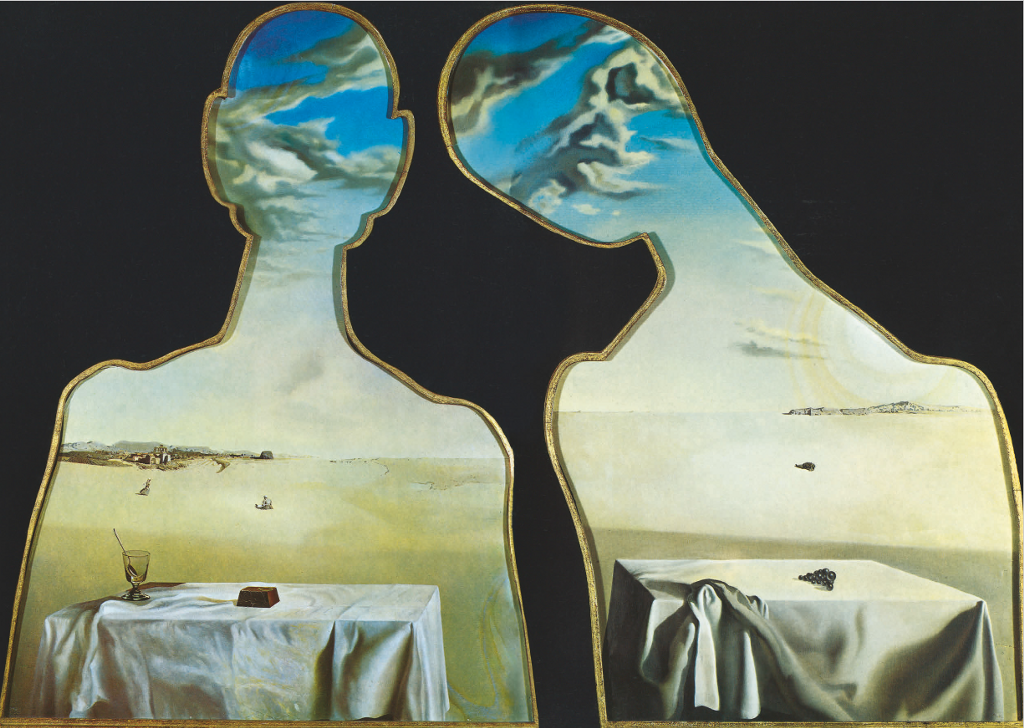
Prying open thirty six mussels and tying them with string however is far from easy, and I had my doubts as to whether they would be cooked properly. In most recipes a mussel opening or not opening is the means by which you tell it’s safe to eat. I beseeched my chef friend, David Bakermault, to help prepare them so as not to poison any of my guests, though by this stage I thought Dalí would applaud if I did, perhaps writing something long-winded about the little-known merits of vomit by way of congratulations.
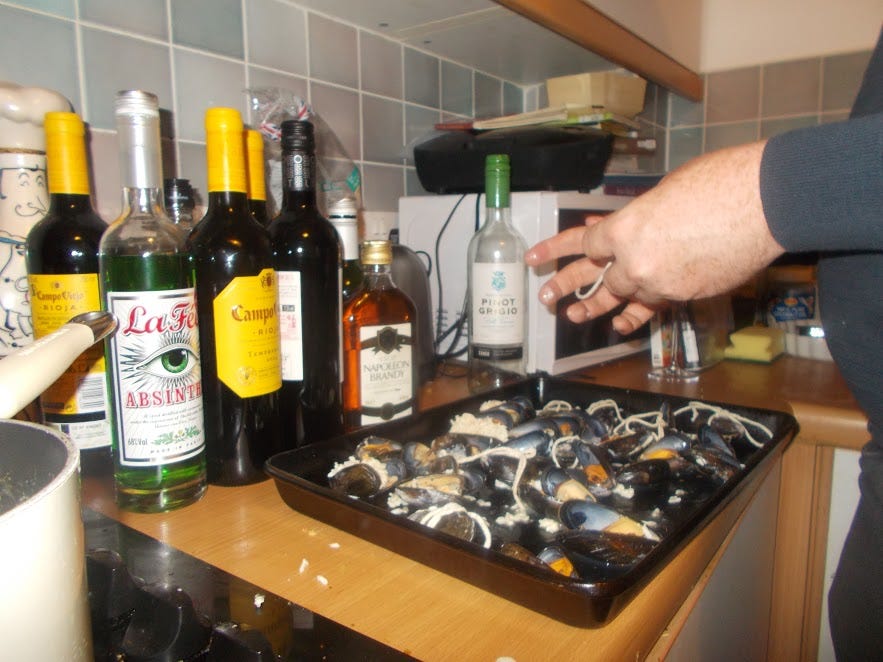
We presented the mussels in a bowl with jelly lip sweets; a homage to Mae West and the sofa I peed on when I was four. They looked beautiful. My friends too, looked gorgeous in their surrealist costumes. Rik was delighted to have reason to wear his red velvet suit jacket, while Johanna dressed as the October day, half wet, half dry — on one side her hair dripped, on the other it was blown as though by the wind, though as the night progressed she had to run to the bathroom to dampen her ‘wet side’ several times. As we sat down to eat, and to drink absinthe, my panic dissipated, and I thought maybe the book was okay. Unlike Babou, who was seemingly fed alcohol in the footage of Dalí’s 1941 party, our cat—our stand-in ocelot—was not given any booze.
I even considered holding another party and thought about where to buy a veterinarian-sized syringe. Ultimately, Dalí was, like Golightly, a real phony. He believed much of what he said, and the things he said to horrify, to get a rise out of people, to drive you insane as you pry mussels open with a knife, these too were real insofar as he wanted to provoke, not in a phony way, but to make people think. What did he want us to think though? I’m still not sure. The cat dragged off the remaining chicken carcass, necessitating a thorough search the next day until we located it in the boiler cupboard. I got the feeling that Dalí would have approved of this, as he would of my own accidental prank in Montmatre.
Are You Addicted To The Internet?
You’re All Alone, Like Everyone Else
There is not enough battery life on your phone to keep you from realizing how empty your life really is.
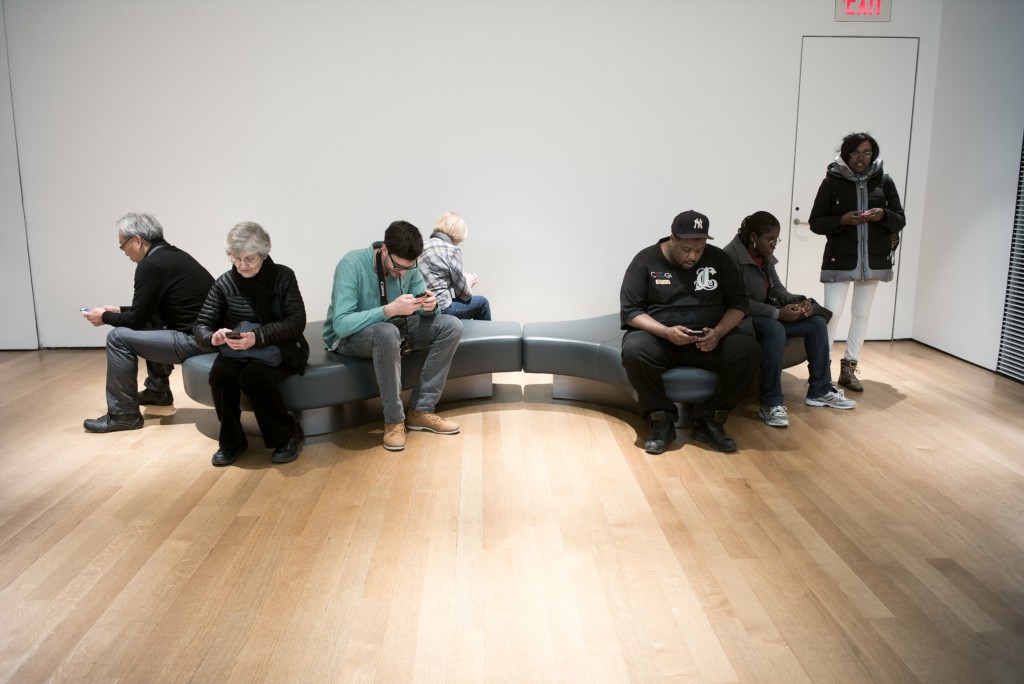
I was walking down the street this morning when I heard someone shouting “I’m stupid! I’m stupid! I’m stupid!” This piqued my interest, since it is the main theme of the conversation I have with myself in my head all the time, but as I got closer I noticed it was an older gentleman, yelling into his phone. Finally I heard him scream, “I’m stupid, I need a human,” and it occurred to me that he was talking to one of those automated voice response systems that so frequently make you want to smash whatever is close to hand with whatever else is close to hand, and this was his way of expressing the natural frustrations we all feel after spending several fruitless minutes attempting to obtain a solution to our simple problems.
It was hard not to see the metaphor for the way we interact with technology in general: We are all that old man, showing the world how simple we are while begging for any kind of personal connection. We tell ourselves that our devices make our lives easier but mostly what they do is distract us, dumb us down and alienate us from the human interaction we so desperately need to keep ourselves together. We have never been more alone and we have never had more ways to isolate ourselves from other people while allowing the illusion that we are members of a community. We give all our attention to something designed to minimize face-to-face contact and then we wonder why we feel so tired and lonely at the end of the day.
In any event, “Is your social media use deeply integrated into your daily life? Do you need to spend more time to get a ‘buzz’ from social media? Do you get nervous when you are not on social media?” These are questions you should ask yourself to determine if you have some kind of “social media addiction.” If you answered yes to any of them — or even if you have wondered about the possibility that you might be dependent on social media to divert you from facing just how horrible and lacking your connected existence actually is — don’t feel too bad about it: There are plenty of other people with the exact same problem. Too bad you’ll never talk to them about it outside of a like-and-share situation.
I'm Still Calling It Daylight "Savings"
Nice try, though.
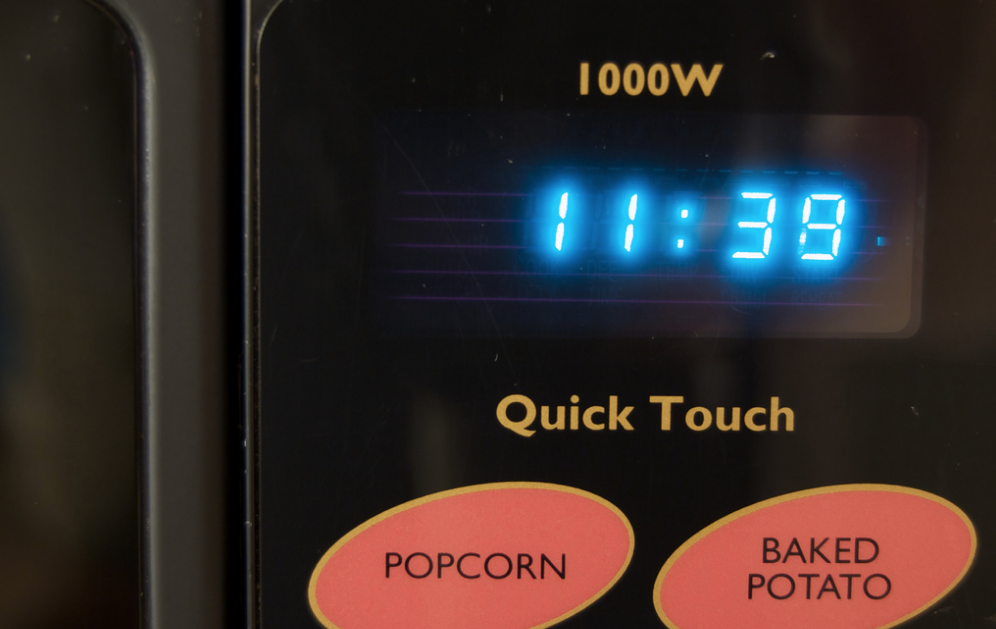
This Sunday, November 6, a lot of us in North America and Europe will set our clocks back one hour in the name of maximizing sunlight time as the seasons change. What do you call this practice?
Daylight Savings? Me too.
The correct name for the custom is Daylight Saving Time—no s at the end of Saving—and I’m noticing a lot of publications’ style guides must have been updated this year, because a lot more headlines are using the official title. A simple Google search for the words “daylight savings” (with the s) yields plenty of evidence: the three top SEO-trawly results all say saving.
“Daylight Saving Time 2016 ends,” says first result Patch.com. “Daylight Saving Time ends Sunday,” coos MarketWatch. “Fall back: Daylight Saving Time ends Sunday,” announces Fox31 Denver. These aren’t the New York Times, folks. They could be more colloquial with their copy if they wanted to. But it seems like everyone, in unison, decided that this was the year they were gonna be on the right side of Daylight Savings, and tbh I’m not here for it.
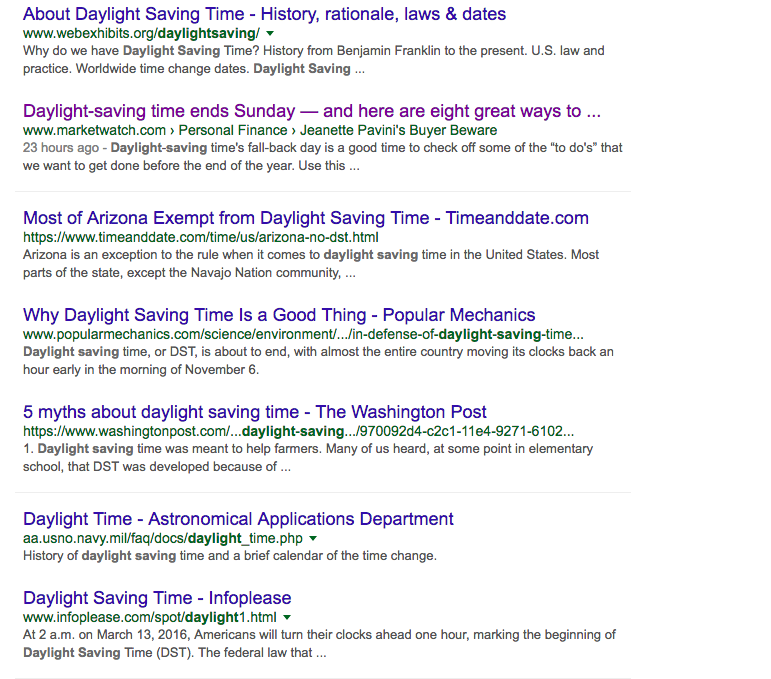
Daylight Saving Time sounds like time we’ve set aside to focus on saving our daylight. Daylight Savings Time sounds like a fun sale where I get more day for my buck just by showing up. And that’s kind of the idea here, right? “We all just did an arbitrary behavior, but it’s for generally good reasons?” Here’s the thing: time is a construct. We made it up. Minutes, seconds, all of it. They’re words for ideas that help us wrap our heads around what’s happening while we’re alive, so in that sense time is very real, but it’s not so real that we can’t make rules up as we go along — like Daylight Savings. Bearing that in mind, who cares what we call it? I could call it Moon Holiday if I wanted to and none of you could stop me. I won’t, but that’s a choice I’m making. I don’t need my trash internet news outlets to suddenly treat this thing with reverence.
As with the gif/jif debate people love to evoke during a slow conversation, I am not interested in the correct answer in this scenario. I’m not here to be correct. I’m here to live my life and save some daylight during the cold winter months, and Daylight Savings rolls off the tongue and the eyes. Is this how people who call it Nordstom’s feel? Cause I think I understand now.
Wikipedia’s own informational daylight map has confused language. It’s Daylight saving in the title and daylight savings in the key:
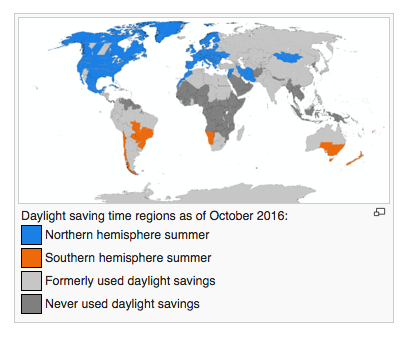
It’s almost… as if… the colloquial name for the phenomenon was easier for the author to access than the official one.
“Christine,” you must be thinking. “Is this really the hill you want to die on?” And honestly, yes. It is. I will bleed out on the side of this Revolutionary War hillock, shaking my bayonet in defense of my right to keep being wrong online. And you can too, if you’d like.
I Talked To Some Trump Voters, Too
The Only Article You Need To Read About Why Trump Voters Are Angry
Because it’s the only article people are writing about Trump voters
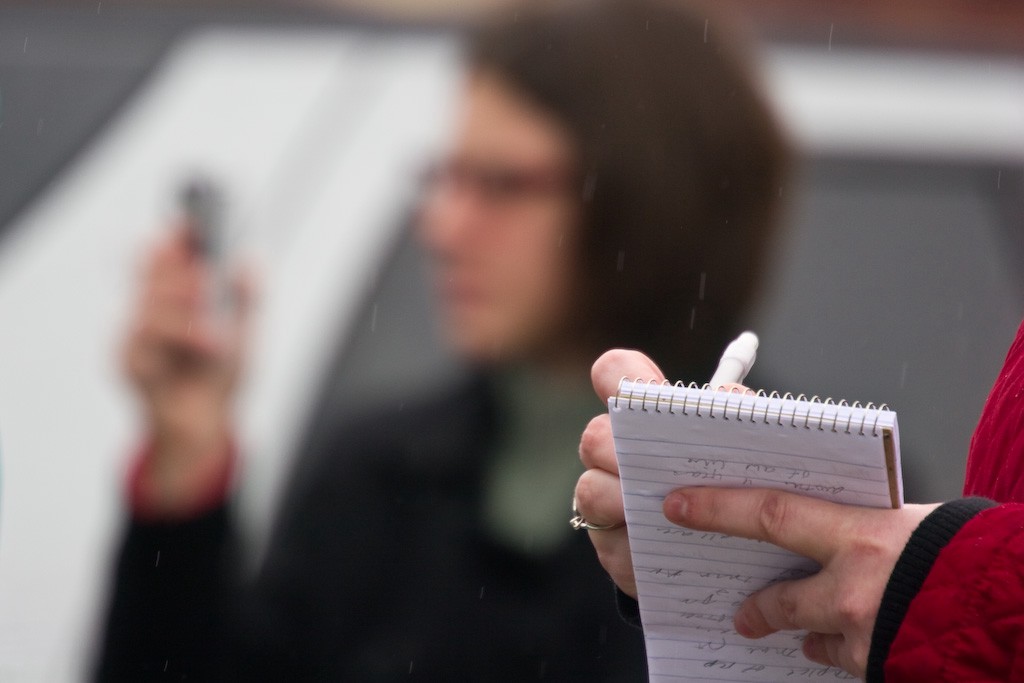
Seemingly every day, Donald Trump violates a previously sacred political norm. By almost every measure, he’s a dangerous outlier in American civic history. And yet, though he’s on track to lose on November 8, he retains more than 40% of voters in most polls. As much as the rest of the country wishes it weren’t so, tens of millions of people still want Donald Trump to be president.
Who are these people? What drives them? And who are these people?
What’s become painfully clear this election cycle is that there’s a fundamental disconnect between national journalists — most of them based in New York City or Washington D.C. — and the white working-class Americans who are Trump’s most ardent supporters. But, except for roughly 7,200 articles on the subject, there has been scant effort made by the mainstream media to understand the kind of voters who say Trump speaks for them. So I set out on a road trip to the part of America most coastal elites don’t think about, except when they’re reading one of the fourteen daily pieces in the mainstream media where a journalist visits a town most coastal elites don’t think about.
Bleaksville, Kentucky (or maybe it’s in Ohio or West Virginia, I can’t remember) has seen better days. From the 1950s through the 1970s, it was home to two of the largest pillowcase factories in America, singlehandedly exporting 15% of high-quality American pillowcases all over the world. But beginning in the 1980s, many factory jobs began to be shipped abroad, mostly to China’s “Pillowcase Belt.” And when those silky ladders to the middle class vanished, so did the town’s social fabric. If Bleaksville was already on the ropes by the end of the ’90s, the Great Recession dealt it a knockout blow. It now ranks in the bottom ten in the country in crucial quality-of-life measures like social mobility, teen pregnancy, and Politico Pro subscriptions. Bleaksville’s Main Street was once a thriving hub of commerce; now it’s dotted with used-condom stores, with the husk of an old abandoned monorail looming in the background. There used to be fourteen bars along this stretch, where workers would congregate after a long day producing and assembling pillowcases. Now there’s only one, O’Briens, and it only sells opioids.
I spoke with Freddy O’Brien, a fifth-generation Bleaksviller who operates the bar. He told me he’d already talked about his support for Donald Trump to reporters from The New York Times, The Washington Post, USA Today, The Daily Mail, The Hindustan Times, and Stormfront so far that day, but that he’d be willing to do one more interview before hosting an opioid and pizza party for the high-school football team (which I assume is the linchpin of the community). I asked him why he disliked Hillary Clinton so much, given that her tax and health care policies would directly benefit his family, whereas Trump had personally pledged to take away his father’s oxygen tank and burn it for sport. “People around here are tired of getting spit on, and Trump gets that,” O’Brien said. “I’m angry. We’re all angry.”
“What are you angry about?” I asked.
“Everything,” he replied.
I couldn’t help but notice that people in Bleaksville are angry.
My suspicions were confirmed when I spoke to Ed Sherman, a sixty-seven-year-old retired teacher who has a thirty-seven-foot-tall sign outside his house that reads “Barack Obama Is A Demogorgon From Hell.” Though he believes that Obama is a secret member of ISIS who has recruited Hillary Clinton to smooth the group’s transition into witchcraft, he insists his support for Trump has nothing to do with race or gender.
“I don’t have a racist bone in my body,” he said. “I don’t care if you’re white, yellow, or colored. I’m just worried about these Muslims forcing Shariah Law on us here in Bleaksville. Trump’s gonna put a stop to that.”
When I pointed out that there wasn’t a single Muslim in the county, he cut me off.
“Trump’s a businessman,” he said. “We’re angry,” he added.
I wanted to hear more, but he explained that David Brooks had scheduled an interview with him to discuss whether he ate dinner with his family every night, and what it means for America.
While it’s tempting to pigeonhole Bleaksville residents based on small-town stereotypes, the reality is inevitably more complicated. I learned that lesson near the “supplies for visiting journalists” aisle at the local Walmart, where I ran into Alison Loudis, a twenty-nine-year-old lesbian folk singer who recently moved back to Bleaksville after earning a PhD in comparative literature from Brown. She, too, is planning to vote for Trump.
“I understand that Trump is a terrible person,” she said. “Everyone does. We’re not that stupid, and we know he’s out to con us. But people around here are angry. We’re so angry we want to be conned. And maybe while he’s destroying the planet, he’ll wipe out my student debt, too. Get it?”

The people of Bleaksville have a right to be angry. They see a corrupt establishment that has forgotten about their town. They see a Democratic Party that says it’s all about tolerance, but that…sorry, I lost my train of thought. Anyway, it’s easy to say their populist rage is all about race or prejudice, but it’s not so simple. Or is it? Maybe it is — I’m not really sure, but don’t feel comfortable going in either direction. And what does NAFTA have to do with all this? Once again, I’m not totally clear on that, but I needed to mention it at some point. Look, I’ll be honest: I left Bleaksville with no greater sense of understanding about anything than when I arrived.
The important thing to remember is that I talked to some Trump voters.
And they’re angry.
Follow Benjamin Hart on Twitter, please.
The Singing Rocks
The Adventures of Liana Finck

Liana Finck’s work appears regularly in The New Yorker. Her graphic novel is called A Bintel Brief. She is on Instagram at @lianafinck
Matt Karmil, "Juicy Fruits"
Have you figured out who to avoid for the next six days?
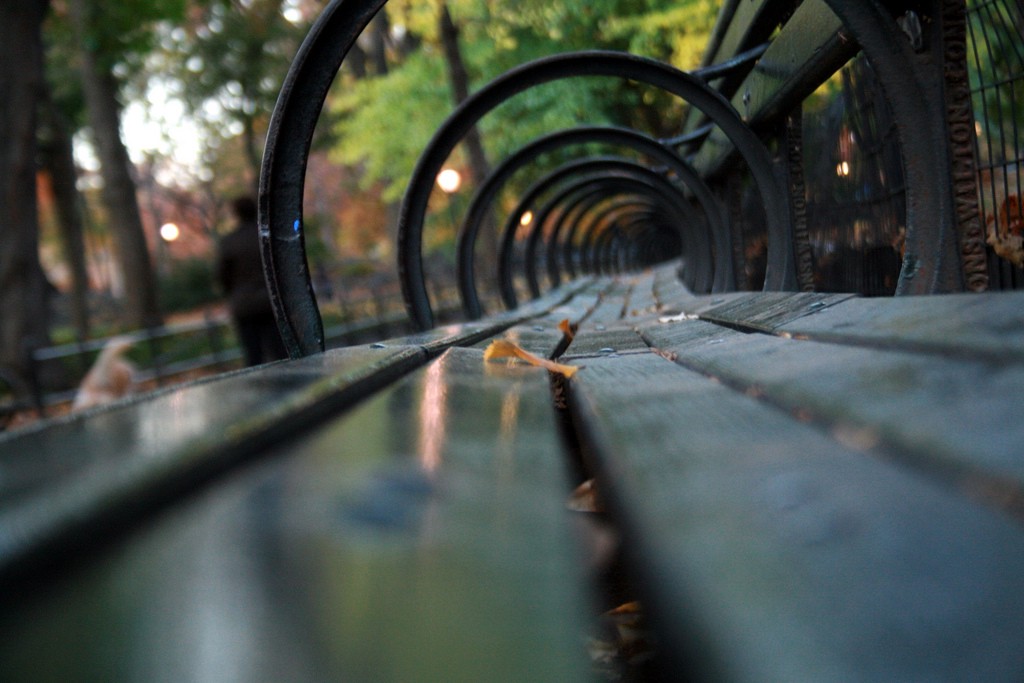
Your mission in the time we have left is basically to not let anyone who is going crazy about the election right now infect you with their agitation. I would suggest staying off the Internet altogether but I know in our modern world this is impossible and even if you did manage it the people who seriously wet their pants about polls would still find a way to get in touch. I am not a big believer in bullshit hippie solutions to the problems of existence but I would not look down on you right now if you investigated some breathing techniques for short-term assistance. We’ve all got to do what we can these days. Here’s some music that will distract you for several minutes. Enjoy.
New York City, October 31, 2016

★★★★ Pink patches floated on the morning sky and on the tower mirroring it. The river was the color of new denim. From the uptown corner of the living-room window, the corner away from where the five-year-old sat uncostumed and sulking on the couch, it was just possible to see the other children’s parents waiting along the avenue for the costume parade, far below. The midday sky came in deep, seasonable blue. An aluminum ladder sent sun flaring up into the office window. In the evening, a breeze was blowing up the building stairwell, filling the five-year-old’s Jedi robe as he descended. Floor by floor, the sunset colors glimpsed out other people’s windows, beyond the candy bowls or baskets, shifted and evolved and were slowly lost behind the viewbreak.
Should I Write A Novel In November?
November Is More Than Novels And Moustaches
And other answers to unsolicited questions
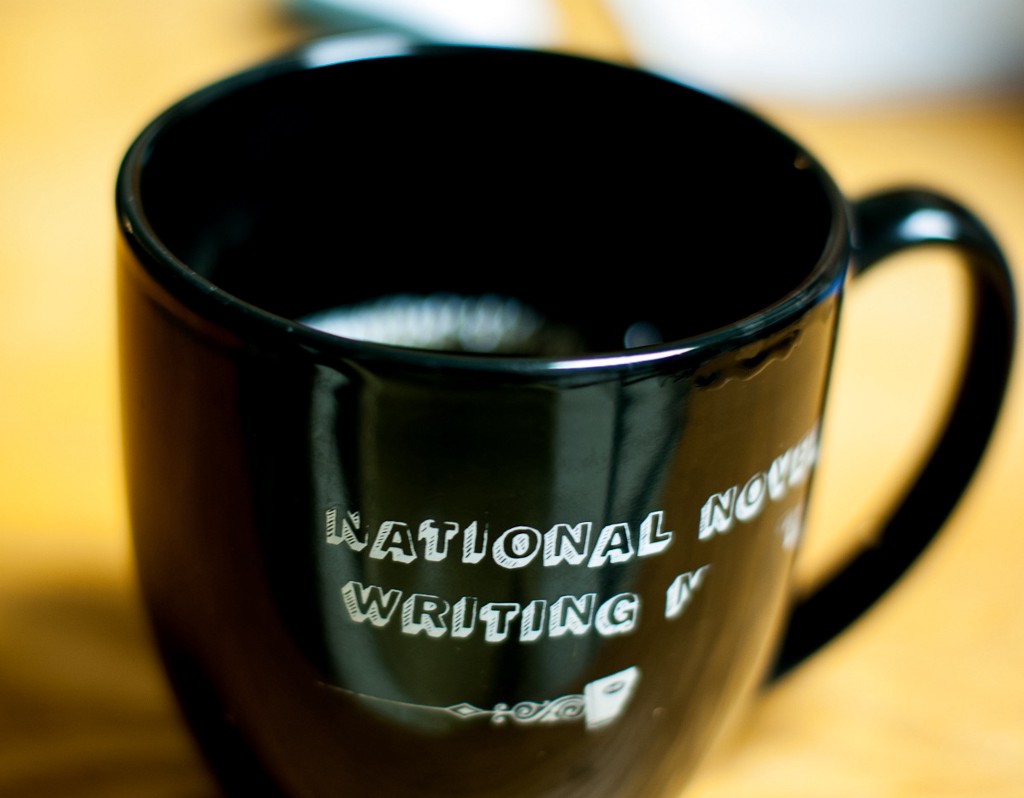
“Should I try to write a novel in November? Some of my friends are doing it. What do you think?” — Novel-writing Nate
A few of the people on your Twitter timeline you’ll be muting in November will be writing novels in November and humble-bragging about it on social media. It’s part of a thing they invented a while back with a weird nickname that has produced a few good books over the years. Water for Elephants by Sara Gruen and The Night Circus by Erin Morgenstern. Whether the time constraints are helpful to people who aren’t already writing fiction, I don’t know. Maybe the social media competition aspect is helpful to some writers, that’s possible.
I’m pretty sure the lady who wrote The Hunger Games wasn’t doing a word count and a happy dance after every day she wrote those books. That’s what people who are suffering through an assignment do. And no one said novel-writing should be fun. Writing is hard or else the world would be mostly books and decidedly fewer people.
And in general I am against these meme-y projects online. I’m just old and bitter, not yet having made much progress on my novel, The Coldest Night of the Year. I’m still definitely writing it, I’m just taking a year off to research heavy drinking. I’m doing slow, harrowing research. But what the hell do I know? Go for it. Write that novel in a month. What the Hell.
I think it would be more useful to be writing a screenplay. Or, even better, a TV Pilot. You can always hire some real writer to ghost-write the movie-tie in. I’d say TV has more of a future than writing boring books. They gave Bob Dylan the Nobel Prize in Literature. They won’t be coming back to America for a while. And by then they’ll probably have added TV Shows to the Nobel Prize prizes list. And subtracted “Peace.” Good TV shows do more to keep people home and peaceful than any prize.
My key to writing a good November novel: Keep it simple. We don’t need another sprawling coming-of-age-tale about a dysfunctional white family. We don’t need any super-smart kids who are obviously written by adults. Start with a grabby premise and add in a bunch of twists. And skip the adultery. Adultery is a lame plot device. Like the gun that shows up in chapter 1 will be shot in chapter 13 sooner or later the adultery will be found out. And so what if fictional characters get busted having affairs? I won’t have to go to their house and have to help them move their stuff to a new apartment. No matter how much I like Huck Finn I’ll be mad at him for riding a raft down the Mississippi River with anyone else but Jim.
You don’t have to have a finished product by November 31th. Just something you can give to an editor. An even better result might be that you’re not finished by the end of November. Go get ’em, writers! I’d say that I’ll follow your progress on social media, but I’ll probably mute you.

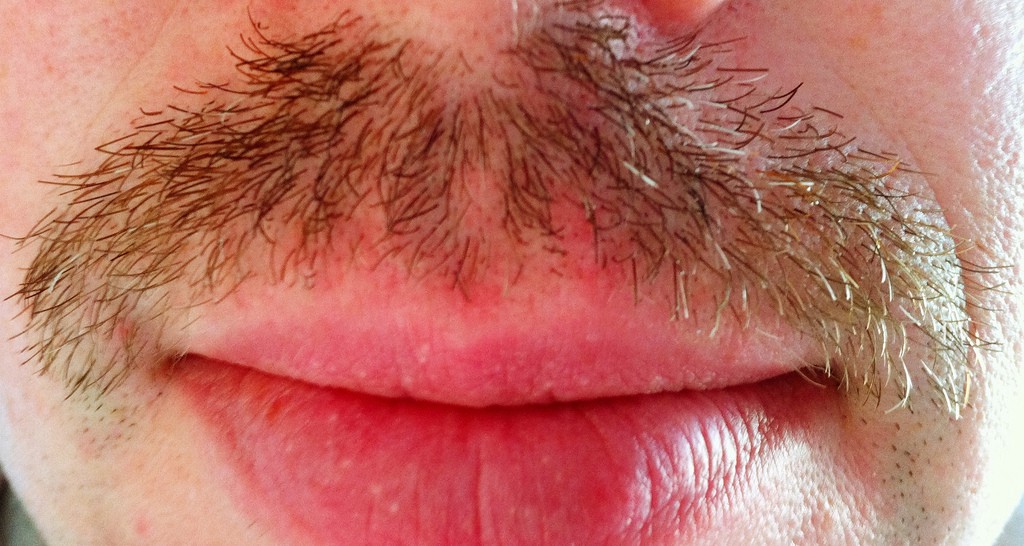
“I was thinking of doing that No Shave November thing. Should I try it? Some of my friends are doing it.” — Hairless Hank
What is it with November and memes? The days are getting darker and colder and I guess we just need an excuse to keep on living. We have to trick ourselves into agreeing to continue to exist. People grow beards to raise money for cancer. I don’t know how the money is involved. Do people bet them that they won’t be able to grow much hair? Or that the beard-growers will get itchy and have to shave it off by November 10th? Possibly. New beards do get itchy.
You could just give a big check to Whichever Cancer Non-Profit you prefer. We don’t have to dump ice water on our friends or snort cinnamon or whatever. We could just give people money directly, without the memeing. But whatever. You gave. That’s cool. Helping people is nice.
The key to growing a nice beard: just leave it alone. I am the one constantly trying to get the thing completely even. And making it even more crooked. Crooked is not a good look. You’re not the one who has to look at the patchy thing growing across your face all month. I’m also big on touching the thing, brushing it, trying to make it as soft as possible. That’s a giant waste of time, too. Stop screwing around with it. Just let it do what it’s going to do. Which is perhaps nothing. But still.
Definitely don’t dye it. Gray hair looks cool and distinguished. I think gray hair is a good look for everyone. When I see gray hair I think wisdom. Let it go! Let it grow! Just don’t get any of your facial hair in my Thanksgiving dinner.
Jim Behrle lives in Jersey City, NJ and works at a bookstore.
How To Not Drink On Election Night
I don’t know.

I’ve never done it before, at least not as an adult. My most recent sober presidential election night probably involved, like, watching “Laverne & Shirley” and playing Chutes & Ladders. Both still viable options, I guess, though I’ll remind you that Laverne and Shirley work in a brewery, which some people might find triggering. And also that their lives are sort of grim. They live in a basement and spend all day every day putting caps on beer bottles, and they’re a little on the dim side and their friends Lenny and Squiggy are even dimmer—in fact, something seems outright wrong with Squiggy and no one talks about it. Worst of all, you get the feeling that this may be as good as it gets for any of them, that in 40 years’ time they could be bitter, disenfranchised people in thrall to an angry demagogue who claims that only he can make the Rust Belt shine again.
So maybe don’t watch Laverne & Shirley on election night if you are triggered by breweries or hopelessness.
In addition to breweries I would stay away from bars. Bars on election night have that half-festive, half-hysterical vibe that usually accompanies snowstorms or nuclear near-misses. When they called it for Obama in 2008, my local pub went batshit with giddiness as though it were V-E Day. I got kissed by a stranger, like in that famous Doisneau photograph. Which was pretty great, yes, but only because we were both drunk — I suspect that being sober and seeing some red-eyed, grinning sot lumber toward me would not give me the same war-is-over rush. And unless you feel solid in your sobriety, being the awkward sober barfly is probably your best-case scenario on Election Night. If it’s a tight race, and you’re amped up and nervous and surrounded by options for not feeling that way — well, you’re likelier to pick the chute than the ladder.
So skip the bars and also any watching parties that you know will be big boozefests. Anyway, if your circles are anything like mine, both will be filled with the usual people talking a big game about moving to Canada, and if there’s anything I’m more sick of than people chanting “Lock her up!” at rallies, it’s people who make speeches every four years about moving to Canada and never actually do it.

I’m not giving you much how to go on, am I? Because I don’t know. When I got sober three and a half years ago, I failed to anticipate that my first sober election would be quite so, well, you know. I didn’t expect to be having thoughts like, “At least Mitt Romney’s binders were full of women he wanted to hire,” or “At least George W. Bush’s conscious intentions weren’t outright evil, maybe.” I’m dizzy with recalibration and my game plan’s a little flimsy. But I do know I’m not going to drink, and even if I can’t tell you how, I can certainly tell you why: Because of fear.
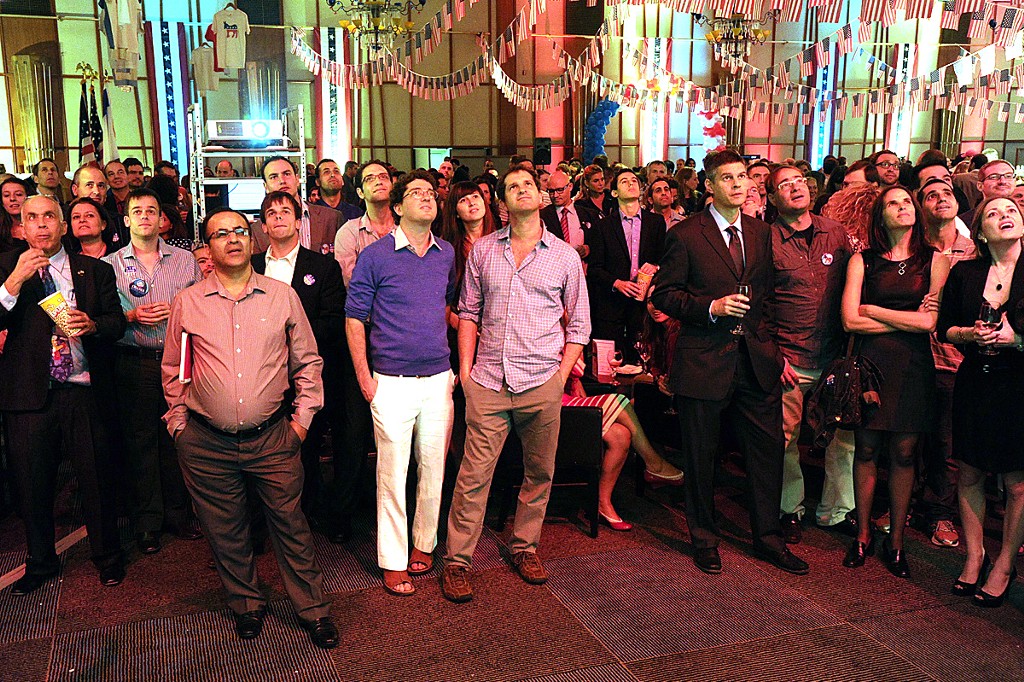
Fear around presidential election time is nothing new for me. I am in the half of the population whose bodies are contested territory, and pretty much every election involves one candidate promising to violate my fundamental autonomy as a human being, and it makes me a bit antsy.
But the special thing about this election is that it gives pretty much everyone something to fear. Maybe you’re afraid your marriage will be invalidated, or that your health coverage will disappear, or that someone you love will be deported. Maybe you’re scared of somebody with the mind of a toddler and the heart of a rapist having the nuclear codes, or frozen in horror that someone who fucked up someone email stuff and reminds you of your mom might get to run things.
Maybe you’re even reliving fears from your past of the first time someone bantered locker room-style with your body in an alley or dorm room or, in my case, stairwell. The cold concrete wall, the shock of the older boy’s hand, the hunch that telling would only mean more trouble for me.
My fear lately has been big and real and hard to get my arms around. It tells me I’m helpless and that the strange waves rolling through America will smother me and there’s nothing I can do about it. And that’s why I won’t drink on Election Night. Because drinking makes me stupid enough to believe that shit. The truth is I’m anything but helpless, and those strange waves are made up of millions of tiny actions and decisions, including mine. Including yours.
I went for a run this afternoon past a salmon hatchery, where wild salmon are born and return the next year to spawn. The first obstetrics ward for salmon was once just an idea someone had until he did the next thing and the next and the next to make it happen. On my way back, I passed a guy who smiled and said “Hey, I love Sub Pop!,” which was mildly disconcerting until I remembered I was wearing my Sub Pop Records tank top. Starting that label was someone’s idea. I bought and ate a chocolate chip cookie because someone at some point had an idea. You get the point.
Whoever our next president is, I have millions of actions ahead of me. I don’t want to be swept up in a tidal wave of helplessness that ultimately has very little to do with me. I don’t want to be sucked too far into glee, either, though some glee would be nice right about now. Because my life is still mine to shape and so I want to have a clear mind that gets ideas. Where we’re going, we’re all going to need ideas. When you wake up on November 9th, what kind of ideas do you want to have?
